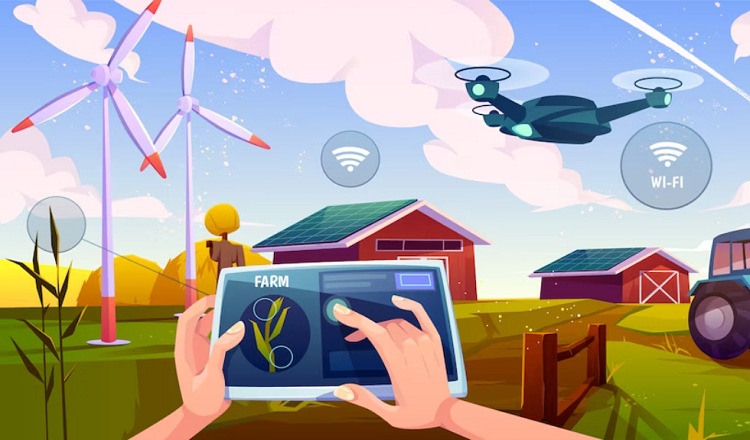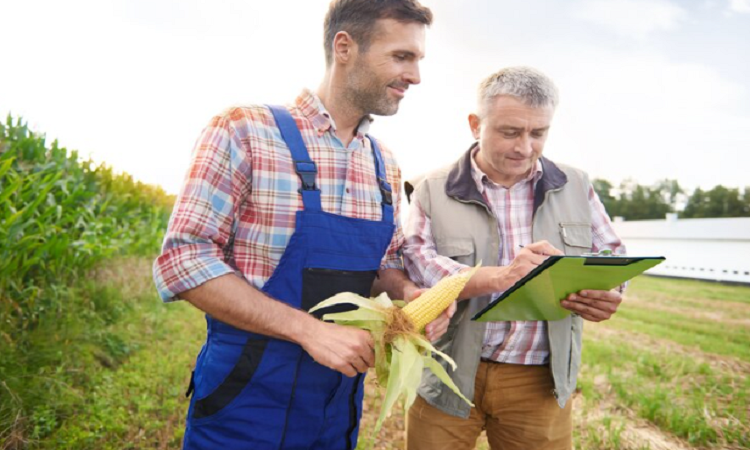The use of advanced technologies in agriculture and rural development, such as drones and data analytics
Are you tired of the image of farmers in overalls, toiling away in the fields without any modern technology? Well, it’s time to update that stereotype. The use of advanced technologies in agriculture and rural development, such as drones and data analytics, is revolutionizing the way we think about farming. With these new tools, farmers can collect data on their crops and land, make informed decisions about planting and harvesting, and even remotely monitor their fields.
So, what are these advanced technologies, exactly? In short, they’re any technology that goes beyond traditional farming methods to improve efficiency and yield. Drones, for example, can be used to survey large fields quickly and accurately, providing detailed data on soil conditions and plant health. Data analytics, on the other hand, can be used to analyze this data and provide insights into crop management, pest control, and more. These technologies have the potential to transform agriculture and rural development, making it more efficient, productive, and sustainable.
In this article, we’ll explore the use of advanced technologies in agriculture and rural development, with a focus on drones and data analytics. We’ll discuss the benefits of these technologies, the challenges in implementing them, and the future of agriculture technology. Whether you’re a farmer, an agricultural researcher, or just someone interested in the future of food production, this article will provide valuable insights into the exciting world of advanced agriculture technology.
Drones in Agriculture
Drones have quickly become a popular tool for farmers, allowing them to collect detailed data on their crops and land. But what exactly are drones in agriculture? Simply put, drones are small unmanned aerial vehicles that can be equipped with cameras, sensors, and other tools to collect data from above.
There are several types of drones used in agriculture, including fixed-wing drones, rotary-wing drones, and hybrid drones. Fixed-wing drones are designed for long-range flights, while rotary-wing drones are better suited for shorter flights over smaller areas. Hybrid drones, as the name suggests, combine features of both fixed-wing and rotary-wing drones.
The benefits of using drones in agriculture are numerous, including increased efficiency, better data collection, and improved crop management. For example, drones can be used to monitor crop health, detect pests and diseases, and map fields. Additionally, drones can help farmers make more informed decisions about planting and harvesting, leading to higher yields and greater profits.
While the use of drones in agriculture has many potential benefits, it’s important to be aware of the potential negative consequences as well. These include job displacement, privacy concerns, and the possibility of drones being used for malicious purposes. As with any new technology, it’s important to weigh the benefits against the risks and use drones in a responsible and ethical manner.
Data Analytics in Agriculture
Data analytics is another advanced technology that is rapidly transforming agriculture. In agriculture, data analytics refers to the use of software tools to collect, process, and analyze data from a variety of sources, including sensors, satellites, and drones.
There are several types of data analytics used in agriculture, including descriptive analytics, predictive analytics, and prescriptive analytics. Descriptive analytics provides insights into what has happened in the past, while predictive analytics uses historical data to make predictions about the future. Prescriptive analytics goes a step further by recommending specific actions based on the data.
The benefits of using data analytics in agriculture are numerous, including improved efficiency, better decision-making, and increased yields. Data analytics can be used to optimize planting and harvesting schedules, predict weather patterns, and detect crop diseases early. Additionally, data analytics can help farmers reduce waste and improve sustainability by reducing the use of fertilizers and pesticides.
However, as with drones, there are potential negative consequences to be aware of when using data analytics in agriculture. These include job displacement, privacy concerns, and the possibility of data being used for malicious purposes. It’s important to balance the benefits of data analytics with ethical considerations and responsible use.
Advancements in Agriculture and Rural Development
Advancements in agriculture and rural development refer to the application of new technologies and techniques to improve the efficiency, productivity, and sustainability of farming practices. These advancements can include the use of drones, data analytics, precision farming, and genetic engineering, among others.
There are many types of advancements in agriculture and rural development, ranging from small-scale improvements in crop management to large-scale changes in agricultural policy. Some advancements focus on reducing the environmental impact of farming practices, while others aim to improve the quality and quantity of crops.
The benefits of advancements in agriculture and rural development are numerous, including increased yields, improved food security, and reduced environmental impact. Advancements can also lead to the creation of new jobs and the growth of rural economies.
Examples of advancements in agriculture and rural development include the development of drought-resistant crops, the use of precision agriculture techniques to optimize crop yields, and the implementation of sustainable farming practices. These advancements have the potential to transform agriculture and rural development, improving the lives of farmers and communities around the world.
Challenges in Implementing Advanced Technologies in Agriculture and Rural Development
While advanced technologies have the potential to revolutionize agriculture and rural development, there are also significant challenges to implementing these technologies in practice. These challenges can include issues related to infrastructure, education, and access to capital.
Types of challenges in implementing advanced technologies in agriculture and rural development can include a lack of reliable internet connectivity in rural areas, limited access to financing and training for farmers, and resistance to change from traditional farming practices.
Strategies for overcoming these challenges can include public-private partnerships to improve infrastructure and provide training and resources for farmers, as well as policies and incentives to encourage adoption of new technologies. It’s important to ensure that these strategies are designed with ethics and responsible use in mind, and to address potential negative consequences such as job displacement and privacy concerns. By addressing these challenges head-on, we can unlock the full potential of advanced technologies in agriculture and rural development.
Future of Advanced Technologies in Agriculture and Rural Development
The future of advanced technologies in agriculture and rural development is promising, with new innovations and advancements emerging at a rapid pace. These advancements have the potential to transform the agricultural industry and improve the lives of farmers and rural communities.
Potential advancements in advanced technologies in agriculture and rural development include the use of machine learning and artificial intelligence to optimize crop yields, the development of gene editing techniques to create crops that are resistant to disease and drought, and the use of blockchain technology to improve supply chain management and traceability.
The potential impact of these advancements on agriculture and rural development is significant, with the potential to improve productivity, increase yields, and reduce waste. However, it’s important to ensure that these advancements are developed and implemented in a responsible and ethical manner, taking into account the needs and concerns of farmers and communities.
Conclusion
In conclusion, advanced technologies such as drones and data analytics have the potential to revolutionize the agriculture and rural development industry. These technologies offer numerous benefits, including increased efficiency, productivity, and sustainability of farming practices. However, there are also significant challenges to implementing these technologies, including issues related to infrastructure, education, and access to capital.
Despite these challenges, the implications of advanced technologies in agriculture and rural development are vast. The potential impact of these technologies on productivity and sustainability of farming practices cannot be overstated. It is important for policymakers, researchers, and private sector stakeholders to work together to overcome these challenges and ensure the responsible and ethical use of these technologies.
In light of this, there is a need for further research and development of advanced technologies in agriculture and rural development. This includes the exploration of new and innovative technologies, as well as the development of policies and programs to promote their adoption. By working together to harness the power of advanced technologies in agriculture and rural development, we can create a more sustainable and prosperous future for farmers and rural communities around the world.
Read More You May Like:














Post Comment